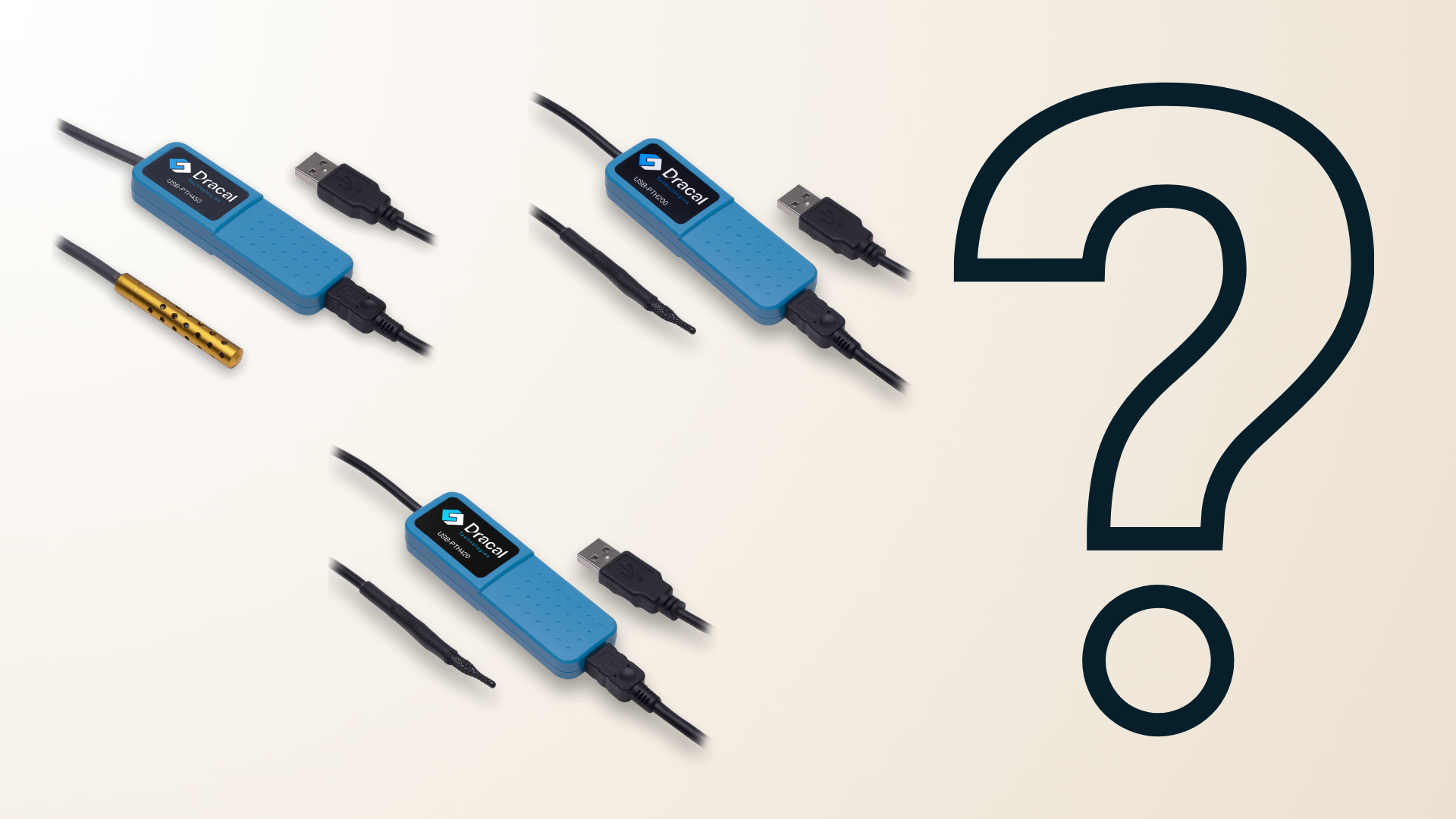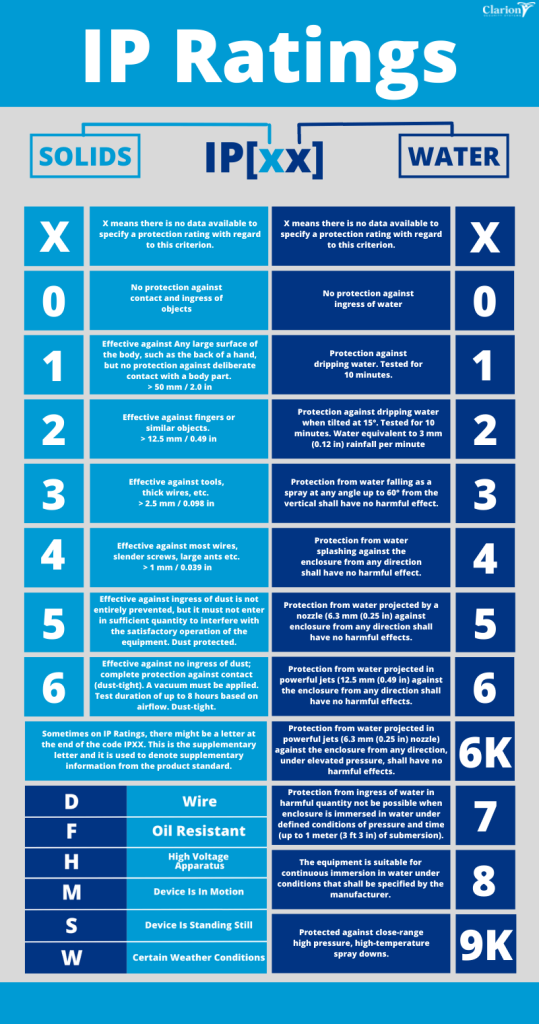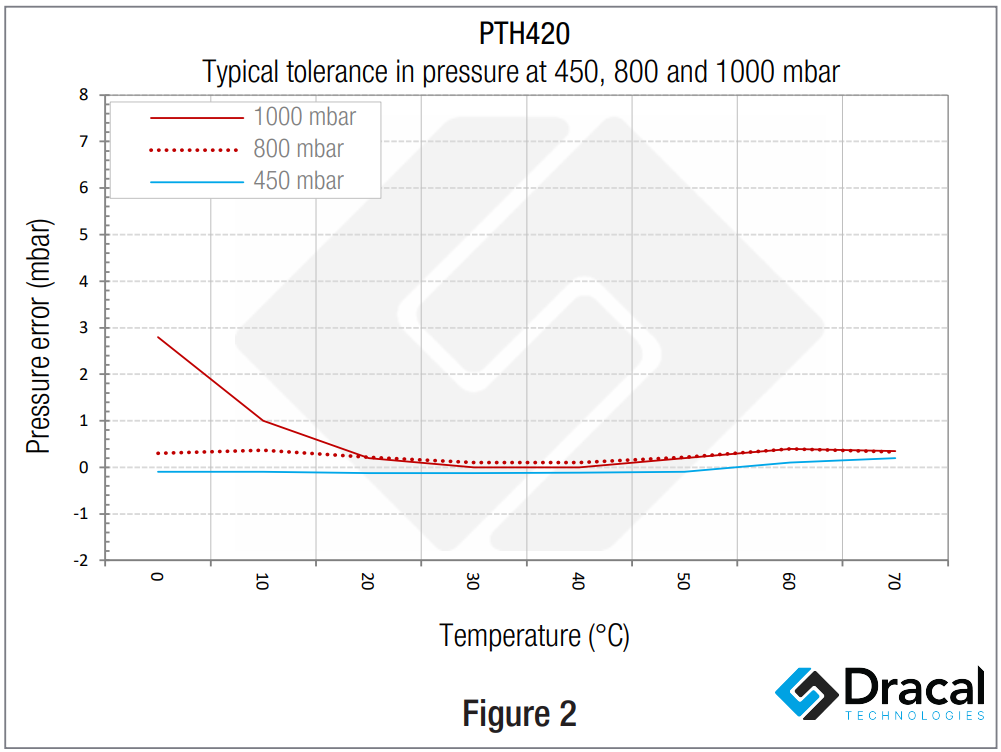10 Questions about USB Temperature, Relative Humidity, and Atmospheric Pressure (PTH) Sensors

In the article, we will focus on the most frequently asked questions about the PTH series of measuring instruments
- 1- Can the probes be submerged in water?
- 2- Can I use the instrument within the probe's operating range, even though the cable and housing temperature range is 0°C to 70°C?
- 3- My relative humidity reading is above 100% RH. What is happening?
- 4- Can I use two PTH sensors to determine the pressure difference between two points?
- 5- What is the advantage of a PTH sensor over a TRH sensor?
- 6- Are the barometers' temperatures compensated?
- 7- Is the individual calibration of the measuring instruments done at the Dracal factory?
- 8- Can I obtain a STEP/CAD file of the PTH I purchased to know its dimensions?
- 9- Besides the operating temperature range, what makes the PTH450 superior to the PTH420 since they have the same accuracy?
- 10 - Where is the barometer located in the PTH sensor?
1- Can the probes be submerged in water?
No. These are instruments for measuring air parameters. Although the probes can tolerate 100% RH (Relative Humidity), they may stop functioning if water comes into direct contact with the sensor. In such cases, you should dry it, preferably by heating the instrument to 60°C with a stream of air. Once dry, it should work again.
All our PTH sensors have an IP rating (Ingress Protection rating) of 51, which means they are protected against dust and water droplets for a short time.

Source: https://clarionuk.com/resources/ip-ratings/
2- Can I use the instrument within the probe's operating range, even though the cable and housing temperature range is 0°C to 70°C?
|
Product |
Temperature range |
Temperature accuracy |
Humidity accuracy |
Notes |
|
-40°C to 70°C |
±0.3°C |
±2.0 %RH |
Basic |
|
|
-40°C to 70°C |
±0.1°C |
±1.5 %RH |
More precise |
|
|
-40°C to 125°C |
±0.1°C |
±1.5 %RH |
Better protection |
The cable and housing were not designed for temperatures below 0°C. However, all components are compatible with temperatures ranging from -40°C to 85°C. We recommend securely fastening the measuring instrument and not bending the wire if you wish to take measurements below 0°C.
Regarding the aluminum probe with a silicone-covered wire (PTH450), it is advisable to place only the probe in an environment above 70°C.
3- My relative humidity reading is above 100% RH. What is happening?
The first question to ask is whether you have performed relative humidity calibration. If so, here is a simple procedure to test before contacting us:
- In DracalView, in the Sources tab, type ["channel identifier"_nc] as the formula for a mathematical channel.
- In the GraphView tab, check if the reading of this formula is corrected.
- In the Sources tab, click the Calibrate button and then check the Disable calibration box.
- In the GraphView tab, check if the reading of the relative humidity channel is corrected.
- If so, we recommend removing the calibration points by clicking the red X next to each one.
4- Can I use two PTH sensors to determine the pressure difference between two points?
No. Barometers have an accuracy of 200 Pa across the operating range. By using two instruments, the measurement uncertainties add up, and the total accuracy becomes 400 Pa. To ensure better accuracy, use a differential pressure sensor rather than two barometers.
5- What is the advantage of a PTH sensor over a TRH sensor?
The PTH sensor includes a barometer, while the TRH sensor does not. However, in terms of temperature and relative humidity measurement accuracy, there are equivalents in both series. The usefulness of knowing atmospheric pressure depends on your application. For measuring air parameters at different altitudes, it can be advantageous to know the atmospheric pressure. It impacts condensation, a critical phenomenon for precision electronics.
6- Are the barometers' temperatures compensated?
Yes, by the component manufacturer, using first-order compensation between 20°C and 80°C. Using a PTH at a lower temperature may slightly drift the atmospheric pressure measurement.

7- Is the individual calibration of the measuring instruments done at the Dracal factory?
At the Dracal production factory, a pass/fail type test is conducted during the production of the measuring instrument. In addition, the component manufacturer performs individual calibrations at their factory before sending them to us. These calibrations are not ISO 17025 certified, but if your industry does not require this standard, you can confidently use Dracal's USB sensors upon receiving them.
8- Can I obtain a STEP/CAD file of the PTH I purchased to know its dimensions?
We do not provide such a file, but all the housing dimensions are indicated in the product datasheet. The cable length is also specified: 1 m.
9- Besides the operating temperature range, what makes the PTH450 superior to the PTH420 since they have the same accuracy?
The PTH450 has a probe with a silicone-covered wire. This sheath protects it not only from excessive temperature but also from ultraviolet rays, chemicals, bacterial contamination, and fire. Its only drawback is that it is less abrasion-resistant than the PVC covering the PTH420.
In addition, the temperature and relative humidity sensor of the PTH450 is covered with anodized aluminum, making the probe more resistant to mechanical pressures.
10 - Where is the barometer located in the PTH sensor?
The barometer is inside the blue housing, while the probe ending contains the temperature and relative humidity sensor.